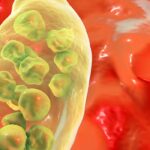Pseudogout, medically known as calcium pyrophosphate deposition disease (CPPD), is an inflammatory joint condition characterized by the deposition of calcium pyrophosphate dihydrate crystals in the joints. These crystal deposits lead to episodes of joint pain and swelling, often mimicking gout, but with distinct pathophysiology and clinical implications.

What Is Pseudogout? Understanding Calcium Pyrophosphate Deposition Disease
Pseudogout is a form of crystal-induced arthritis caused by the accumulation of CPPD crystals, primarily in articular cartilage. Unlike uric acid crystals in gout, CPPD crystals are composed of calcium pyrophosphate, which incites an inflammatory reaction within the joint space.
Key Characteristics
- Sudden onset of joint pain
- Swelling and warmth around the joint
- Most commonly affects the knees, wrists, and ankles
- Attacks can last for days to weeks
Causes and Risk Factors: Why Pseudogout Occurs
CPPD crystal deposition is multifactorial, often associated with aging and metabolic abnormalities.
Common Risk Factors
- Aging: Prevalence increases significantly in individuals over 60.
- Joint trauma: Prior joint injuries can predispose to CPPD crystal formation.
- Genetics: Familial chondrocalcinosis is a hereditary form of pseudogout.
- Metabolic disorders:
- Hemochromatosis
- Hyperparathyroidism
- Hypomagnesemia
- Hypophosphatasia
Pseudogout vs Gout: Key Differences
While clinically similar, pseudogout and gout differ in crystal composition, typical joint involvement, and treatment nuances.
| Feature | Pseudogout (CPPD) | Gout (Uric Acid) |
|---|---|---|
| Crystal type | Calcium pyrophosphate | Monosodium urate |
| Joint preference | Knees, wrists, shoulders | Big toe (first MTP), ankles |
| Age group | Older adults | Middle-aged men |
| Crystal shape | Rhomboid, positively birefringent | Needle-shaped, negatively birefringent |
| Associated conditions | Metabolic/endocrine disorders | Purine metabolism disorders |
Clinical Presentation: Recognizing the Signs of Pseudogout
Acute Attack Symptoms
- Rapid onset of joint pain
- Swelling and tenderness
- Redness and warmth at the joint
- Limited range of motion
Chronic CPPD Disease
In some individuals, CPPD can lead to chronic arthritis that resembles osteoarthritis or rheumatoid arthritis.
Diagnostic Process: How Pseudogout Is Identified
Accurate diagnosis of pseudogout requires clinical evaluation, imaging studies, and synovial fluid analysis.
Synovial Fluid Analysis
- Gold standard: Identification of CPPD crystals under polarized light microscopy
- Crystals: Rhomboid-shaped with positive birefringence
Imaging Studies
- X-rays: Show chondrocalcinosis—calcification of cartilage
- Ultrasound: Detects crystal deposition and joint effusion
- CT or MRI: Used in atypical presentations
Treatment Strategies for Pseudogout Flares and Long-Term Management
Acute Flare Management
- Nonsteroidal anti-inflammatory drugs (NSAIDs): First-line therapy
- Colchicine: Effective for flare prevention and acute treatment
- Corticosteroids: Oral or intra-articular injection for severe inflammation
Long-Term Management
- Address underlying metabolic conditions
- Low-dose colchicine for frequent flares
- Joint aspiration and corticosteroid injection for relief
Lifestyle Modifications and Preventive Measures
While pseudogout is not entirely preventable, several strategies can reduce flare frequency and severity.
Recommendations
- Maintain hydration to reduce crystal precipitation
- Monitor and manage metabolic disorders
- Protect joints from trauma
- Regular exercise to maintain joint health and flexibility
Complications and Prognosis
Pseudogout can lead to chronic joint damage if left untreated, potentially mimicking or contributing to osteoarthritis. However, with early diagnosis and appropriate management, individuals can experience significant relief and retain joint function.
Future Directions in CPPD Research
Ongoing studies focus on:
- Crystal dissolution therapies
- Targeted anti-inflammatory agents
- Genetic studies for hereditary CPPD
- Advanced imaging for early detection
Pseudogout is a common yet often underdiagnosed form of inflammatory arthritis. Its accurate recognition, especially in older adults with sudden joint pain, is critical for effective treatment. Understanding its pathogenesis, clinical manifestations, and evidence-based management enables healthcare providers to improve patient outcomes and quality of life.

